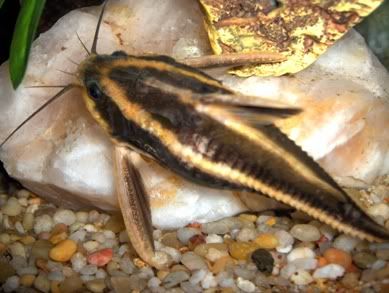After doing my early evening feeding today, I noticed some whitish marks on the side of my P. costatus that hadn't been there the last time I saw him on Monday night. Could someone please tell me if this is normal or if it's an abrasion or something else that I need to monitor? I do know that my S. eupterus "shoos him away" during feeding, but there isn't any other animosity that I've observed at any other time. Temp=78F, pH=7.0, NH3=0ppm, NO2=0ppm, NO3=40ppm.

[IMG:314:267]http://i40.photobucket.com/albums/e213/ ... h_side.jpg[/img]
Any advice would be greatly appreciated




